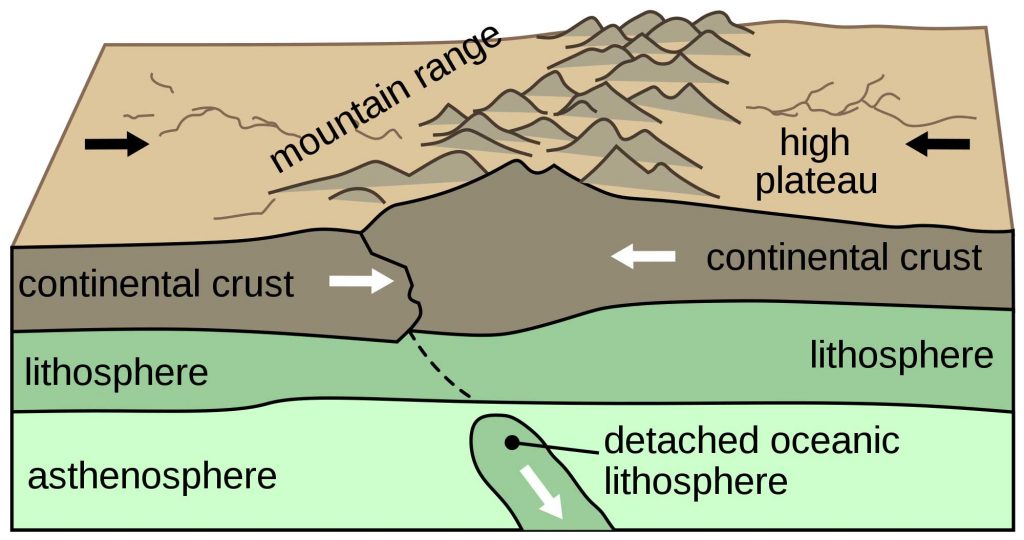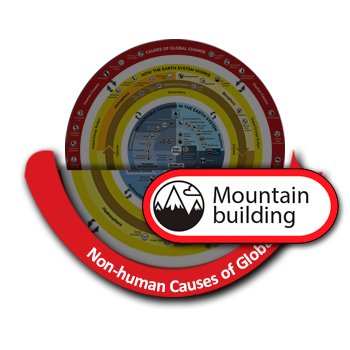Mountain building results from a variety of geological processes. The largest mountain ranges form over millions of years as tectonic plates collide, or as one tectonic plate over-rides another plate.

Mountain ranges, such as the Himalayas (top), can form over millions of years from continent-continent collisions (see illustration below). Source: Pixabay
Mountains form from a variety of processes, most of which are associated with the movement of tectonic plates. The longest mountain ranges on land result from the collision of continents, for example, the Himalayas due to the ramming of the Indian subcontinent into Asia. Mountain ranges also form when one tectonic plate over-rides another tectonic plate, for example the South American plate overriding the Nazca plate forming the Andes Mountains. When one plate over-rides another plate (which is said to be subducted) the mountain building is typically associated with, or can be largely driven by, the formation of volcanoes. Mountain ranges can also occur when thick continental crust cracks (faults) as it thins, resulting in a series of roughly parallel mountain ranges. For example, these kinds of mountains can be seen in the southwestern USA from the eastern edge of the Sierra Nevada to western Utah. Sometimes the action of erosion can leave behind small mountains, for examples mesas in desert regions.

An illustration of continent-continent collision. Source: Wikimedia
Mountains and mountain building affect the Earth system in a variety of ways, including:
- Altering wind and precipitation patterns, thereby creating different climates and ecosystems on either side of mountain ranges. Large mountain ranges, for example, the Himalayas, affect both regional climate and global atmospheric circulation
- Mountain building typically accelerates both weathering and erosion. In particular, the weathering and erosion of uplifted silicate rocks (for example, granites) affects the carbon cycle over millions of years by slowly removing carbon dioxide, a greenhouse gas, from the atmosphere.
- Because temperatures decrease with altitude, mountains affect the distribution of snow and ice cover and how water cycles through ecosystems. For example, the slow release of water from snow melt from mountains can provide freshwater throughout the year as it flows into streams and recharges aquifers.
- Influencing life cycles and traits of organisms as species adapt to live in mountain environments, or to climate changes influenced by mountains.
- Affecting species ranges by forming barriers to the movement of species populations, which in turn can change species interactions.
Can you think of additional cause and effect relationships between mountains and mountain building and other parts of the Earth system?
Visit the plate tectonics, rock cycle, and weathering pages to learn more about how mountain building affects global climate and ecosystems.
